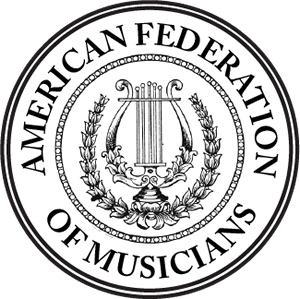Stompin’ Tom Connors
February 9, 1936 – March 6, 2013
Tom Connors died of kidney failure on March 6, 2013 at his home in Ballinafad. Charles Thomas “Stompin’ Tom” Connors, was a Canadian country and folk singer-songwriter from Saint John, New Brunswick. Focusing his career exclusively on his native Canada, Connors is credited with writing more than 300 songs and has released four dozen albums, with total sales of nearly 4 million copies.
His songs have become part of the Canadian cultural landscape. Three of his best-known songs are Sudbury Saturday Night, Bud the Spud and The Hockey Song; the latter is played at various games throughout the National Hockey League; including at every Toronto Maple Leafs home game. In 2018 the song was inducted into the Canadian Songwriters Hall of Fame in a ceremony at a Leafs game.
Connors was born at midnight, February 9, 1936 at the General Hospital in Saint John, New Brunswick, to the teenage Isabel Connors and her boyfriend Thomas Joseph Sullivan.
Isabel’s family were Irish Protestants, and his maternal grandfather, John Connors, was a sea captain from Boston, Massachusetts, who had died before Stompin’ Tom was born. Stompin’ Tom’s father was a Catholic of Irish ancestry, and “may have been Métis or … Micmac.” Isabel Connors and Thomas Joseph Sullivan didn’t wed until 30 years later, probably because Sullivan’s family were devout Catholics and didn’t want him marrying a Protestant; they later divorced. Sullivan’s mother gave him $10, and he was told to leave home. Connors was also cousin of New Brunswick fiddling sensation, Ned Landry.
Connors’ first home was on St. Patrick Street, in the “poorest and most rundown part of Saint John”. He lived there with his mother, his maternal grandmother Lucy Scribner, and his maternal stepgrandfather Joe Scribner When Connors was three, Lucy and Joe died within weeks of each other. This forced Isabel to move to a two-bedroom apartment. Around this time Isabel got pregnant again by Tom’s father when he briefly returned, and Tom got a taste of hitchhiking when he and Isabel went to visit relatives in Tusket Falls, Nova Scotia. This trip was the first time he saw his mother steal to feed them, when she stole food from a Chinese restaurant in Yarmouth, Nova Scotia. When they returned to Saint John, they moved in with friends of Isabel [ and she gave birth to Tom’s sister Marie, who had to stay in hospital to have a birthmark removed. Later, Isabel and Tom moved in with her new boyfriend Terrence Messer at the corner of Clarence and Erin Streets. While they did not marry, the family would take on his surname. Terrence and Isabel did pretend to be married to find a place to live, due to the moral standards of the time. The family was quite poor, and Terrence was a neglectful stepfather, who spent most of the family’s money on wine. When they missed paying rent, the family was evicted and moved to a house on St. Patrick Street. Marie finally came home from the hospital then, but she died when Tom was four, following more surgery to remove another birthmark. To make ends meet, Isabel got a job scrubbing floors and Terrence did odd jobs. The family was evicted again after a spat with the landlord when Tom started a fire in their apartment. Their next home was a basement apartment on King Street.
Connors spent a short time living with his mother in a low-security women’s penitentiary before he was seized by Children’s Aid Society and later adopted by Cora and Russell Aylward in Skinners Pond, Prince Edward Island.
At 13 he ran away from his adoptive family to hitchhike across Canada, he got first guitar at 14 and at 15 he wrote his first song called “Reversing Falls Darling” his hitchhiking journey consumed the next 13 years of his life as he travelled among various part-time jobs while writing songs on his guitar, singing for his supper. He worked in mines and rode in boxcars, and in the coldest part of winter he welcomed vagrancy arrests for the warm place to sleep. At his last stop in Timmins, Ontario, he found himself a nickel short of a 35-cent beer at the city’s Maple Leaf Hotel. Tom told the bartender to put the cap back on the bottle and he’d head for the Sally Ann, but the bartender, Gaëtan Lepine, accepted the 30 cents and offered him a second beer if he would open his guitar case and play a few songs. These few songs turned into a 14-month run at the hotel, a weekly spot on CKGB in Timmins, eight 45-RPM recordings, and the end of the beginning for Tom Connors.
Connors married Lena Welsh on November 2, 1973. The ceremony was broadcast live on Elwood Glover’s Luncheon Date on CBC Television. During an interview on the show, he said they had chosen to get married on television to share this happy moment with his fans across the country whose support had rescued him from a difficult pre-showbusiness life.
Connors was never part of the Canadian musical establishment, and his style was quite different from other Canadian icons such as Leonard Cohen or Gordon Lightfoot. He could, however, be characterized as a passionist poet within Canadian culture, similar to Milton Acorn and Stan Rogers. As the National Post characterized him:
He sang of a nation without politics, to its proud history, and to its better angels. His songs remind us that Canada matters—that we’ve built something amazing here, and must not take it for granted.
Typically writing about Canadian lore and history, some of Connors’ better-known songs include “Bud the Spud”, “Big Joe Mufferaw”, “The Black Donnellys”, “The Martin Hartwell Story”, “Reesor Crossing Tragedy”, “Sudbury Saturday Night”, and “The Hockey Song”. This last, often incorrectly called “The Good Old Hockey Game,” is frequently played over sound systems at National Hockey League (NHL) games.
Throughout the years, Tom never lost touch with Gaëtan Lepine, the bartender he befriended in Timmins; in fact, the two wrote many songs together. These songs are featured in 250 Songs by Stompin’ Tom: Including All the Words and Chords.
In 1968, he composed and sang a radio jingle for a Sudbury-area tire store, Duhamel & Dewar, in exchange for a set of winter tires.
During the mid-1970s Connors wrote and recorded The Consumer, an ode to bill-paying that became the theme song for the popular Canadian Broadcasting Corporation (CBC) consumer affairs program Marketplace. For the first few seasons, Connors appeared in the program’s opening credits, before “The Consumer” was replaced as the theme—initially by an instrumental background version and ultimately by different piece of music.
In 1974 Tom had a series running on CBC Television in which he met and exchanged with folks from all across Canada. Stompin’ Tom’s Canada was co-produced with the CBC, and consisted of 26 half-hour episodes.
The song that Tom wrote in the least time was “Maritime Waltz”, which was completed in 12 minutes.
His character was rough but genuine. As the National Post noted:
That persona wasn’t shtick. Stompin’ Tom was one of the great Canadian story-tellers, and a uniquely collegial one as well. The proper venue for a Gordon Lightfoot performance is a concert hall, where the audience connects silently and contemplatively. The proper venue for Mr. Connors was a smoky bar room where people connected by slamming their beer mugs together, hopefully obliterating whatever differences existed between them.
In 1999, after completing a 38-city tour, Connors received the National Achievement Award at the annual SOCAN Awards held in Toronto.
In 2009, Connors was the recipient of the prestigious Lifetime Achievement Award at the annual SOCAN Awards in Toronto.






